Next Lesson - The Spine
Abstract
Joints are the site at which two bones meet. There are 3 varieties of joints: fibrous joints, cartilaginous joints and synovial joints. The 3 varieties balance mobility with stability. For example, very mobile joints such as the shoulder have comparatively reduced stability (as seen with shoulder dislocations).
Fibrous joints (such as the suture lines of the skull) are the least mobile joints and are reinforced with strong fibrous bands. Cartilaginous joints are slightly more mobile and include examples such as the pubic symphysis and discs between spinal vertebrae. Synovial joints are the most mobile variety of joint and consist of a fibrous joint capsule surrounding two cartilage-capped articular surfaces, and a sack filled with synovial fluid. There are five main types of synovial joint: ball and socket, hinge, pivot, plane and saddle. There are further types of joint which, as they are much rarer, are not outlined in this article.
Core
A joint is defined as the point in the body where two bones meet. As a result, a joint doesn’t just include obvious articulations such as the knee and shoulder but also features such as the joins between bones in the skull.
Joints balance the properties of movement and stability. This means that joints with a high range of movement are often more unstable, such as the shoulder joint, which dislocates relatively easily. It also means that joints with lower range of movement are often more stable such as the sutures in the skull.
There are three main types of joint in the body:
Fibrous joints are extremely stable joints, with fibrous connective tissue stabilising the joint. As a result, fibrous joints have very limited movement. An example of this would be the joints between skull bones, known as sutures. These joints need to be as stable as possible to protect the brain, and do not require any movement.
Cartilaginous
Cartilaginous joints are also stable, with a ‘glue’ of cartilage sticking two bones together. This means that the joints are stable and have limited mobility. This type of joint commonly occurs in the axial skeleton, making up the joints between spinal vertebrae and in the pubic symphysis. These joints also occur at the epiphyseal plates of growing bones.
Synovial joints are the most mobile of all the types of joints. The bone ends are capped with articular hyaline cartilage and are surround by a sack of synovial fluid contained within a fibrous capsule. These joints often have associated ligaments or menisci. There are six main types of synovial joints in the human body:
This type of joint is relatively simple. It involves one bone with a rounded end inserting into a corresponding cup. The best example of this in the body is in the hip joint. This is type of joint allows multidirectional movement, including rotation, flexion, extension, abduction and adduction. Range of movement in the joint is limited by muscles and ligaments which support and move the joint.
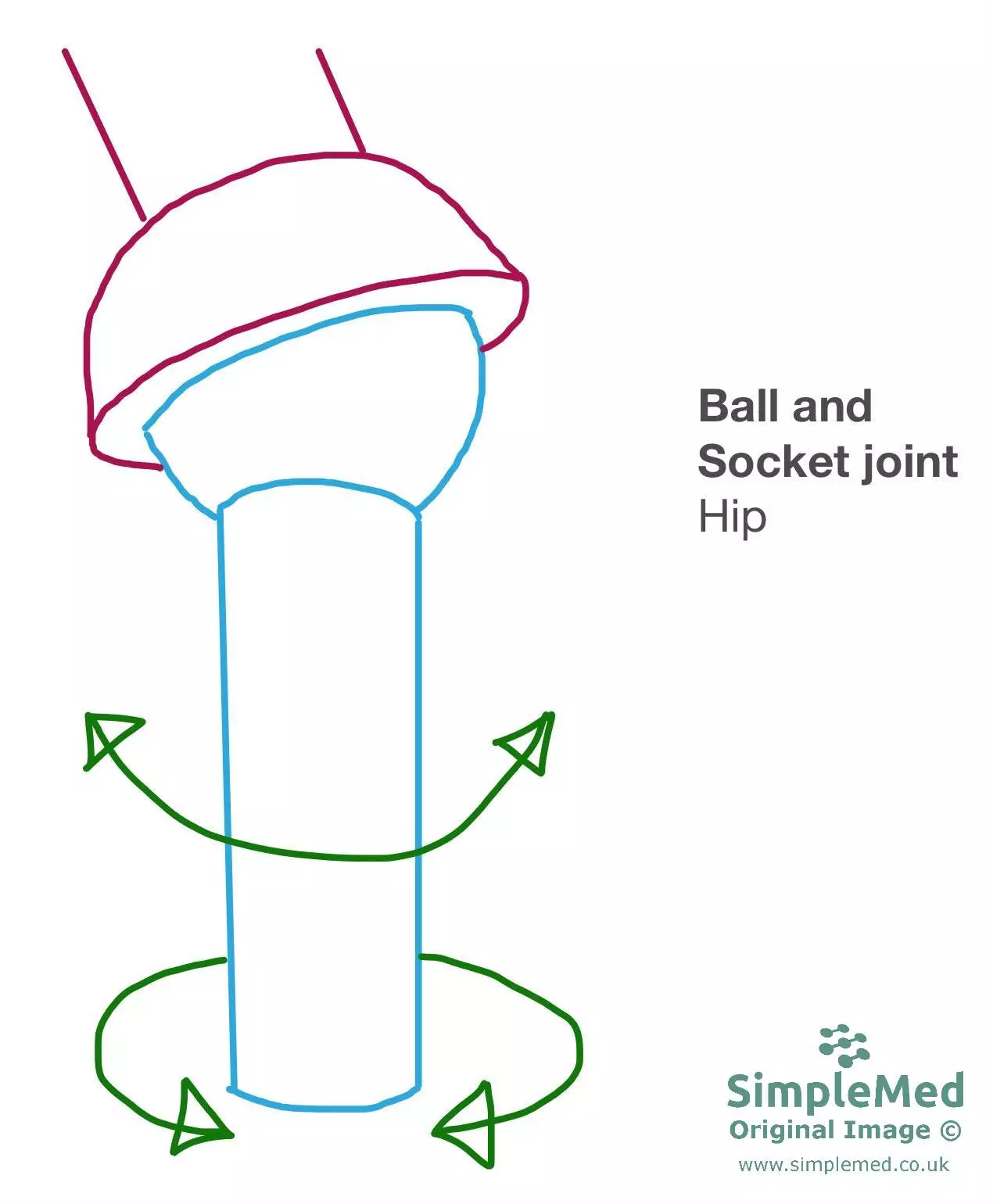
Diagram of a ball and socket joint.
SimpleMed original by Maddie Swannack.
This type of joint is very similar to a ball and socket joint except that the ball is elliptical in shape. Also known as a condyloid joint, this joint allows for all the movements of a ball and socket joint except for rotation (as the oval shape of the bone cannot spin in the oval shaped socket). An example of this is the radio-carpal joint.
This type of joint involves one bone ending in a cylindrical shape, which fits into a trough in another bone. An example of this would be the elbow. Due to the cylindrical shape of the articular surface (where the bones contact each other) this joint only allows for unidirectional movement, like a hinge in a door can only allow movement along one axis.
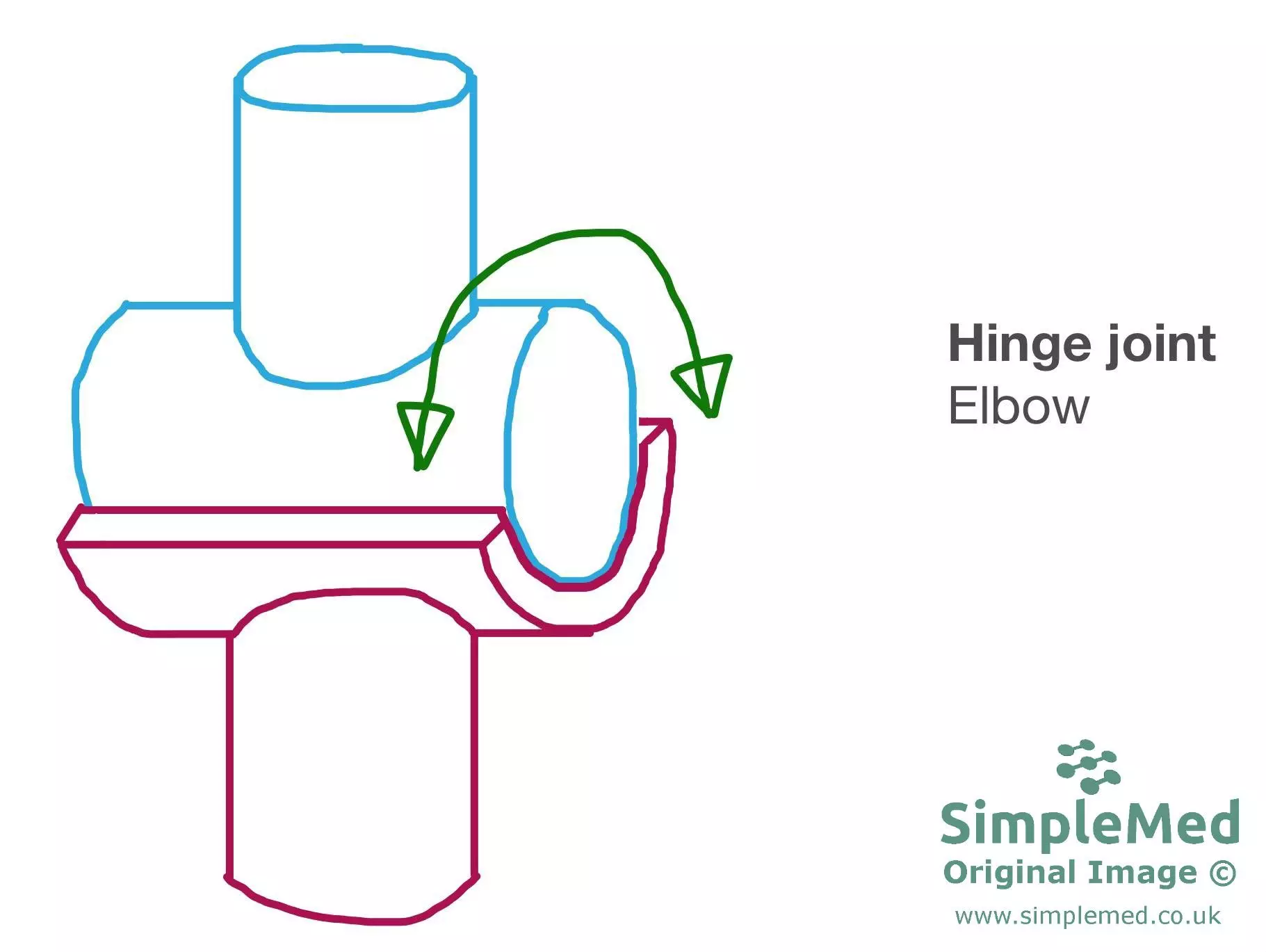
Diagram of a hinge joint.
SimpleMed original by Maddie Swannack.
This type of joint is made up of a peg in a hole. This joint only allows rotational movement. This joint occurs between the atlas (C1) and the dens process of the axis (C2) vertebrae (atlantoaxial joint). The range of movement of the atlantoaxial joint is limited by the many ligaments and muscle of the spine, making it a very stable joint.
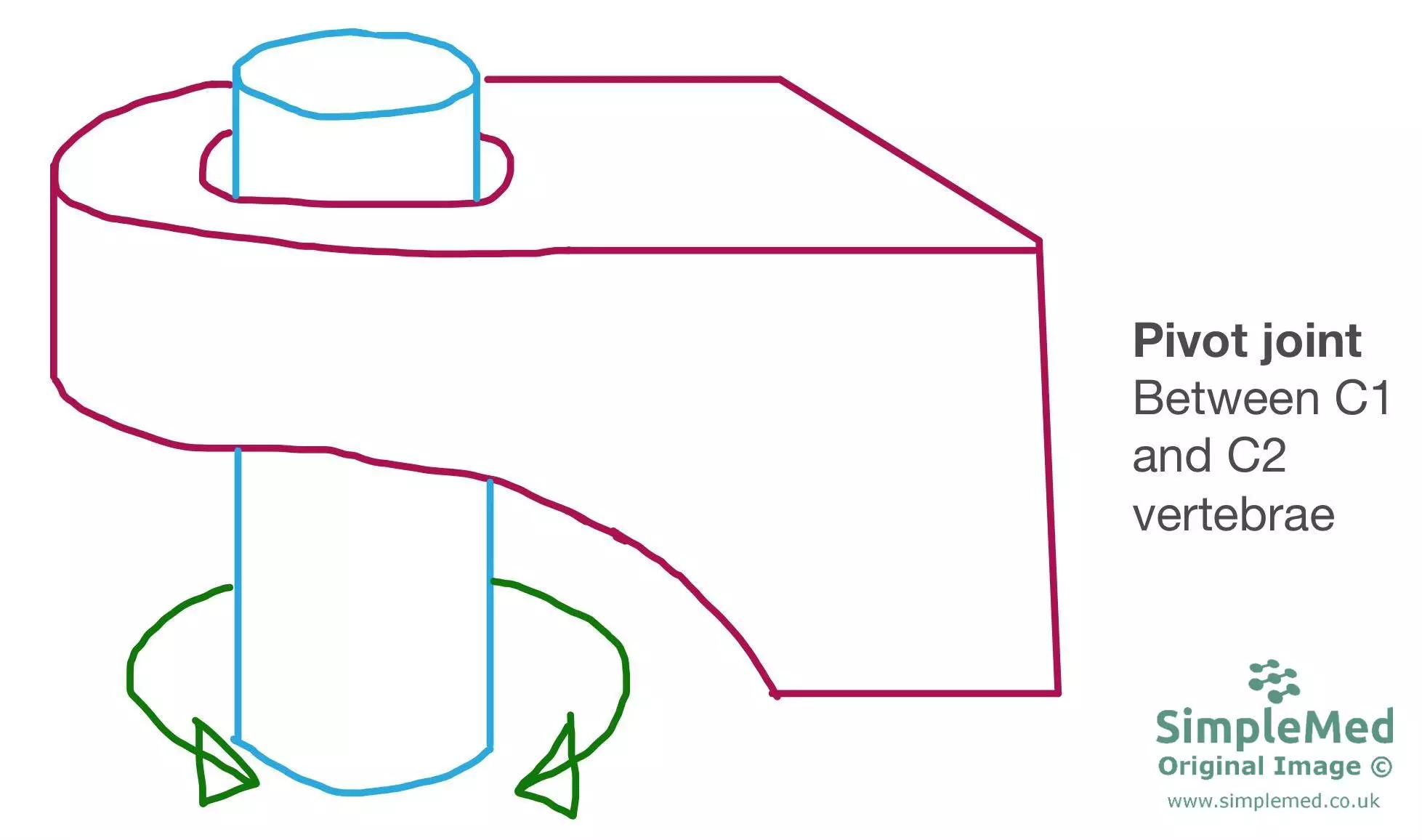
Diagram of a pivot joint.
SimpleMed original by Maddie Swannack.
This type of joint involves two flat surfaces on adjacent bones that can glide in any direction. Plane joints have their movement limited by a tight joint capsule. Example of plane joints in the body are between the tarsal bones in the foot, or between the sternum and the ribs.
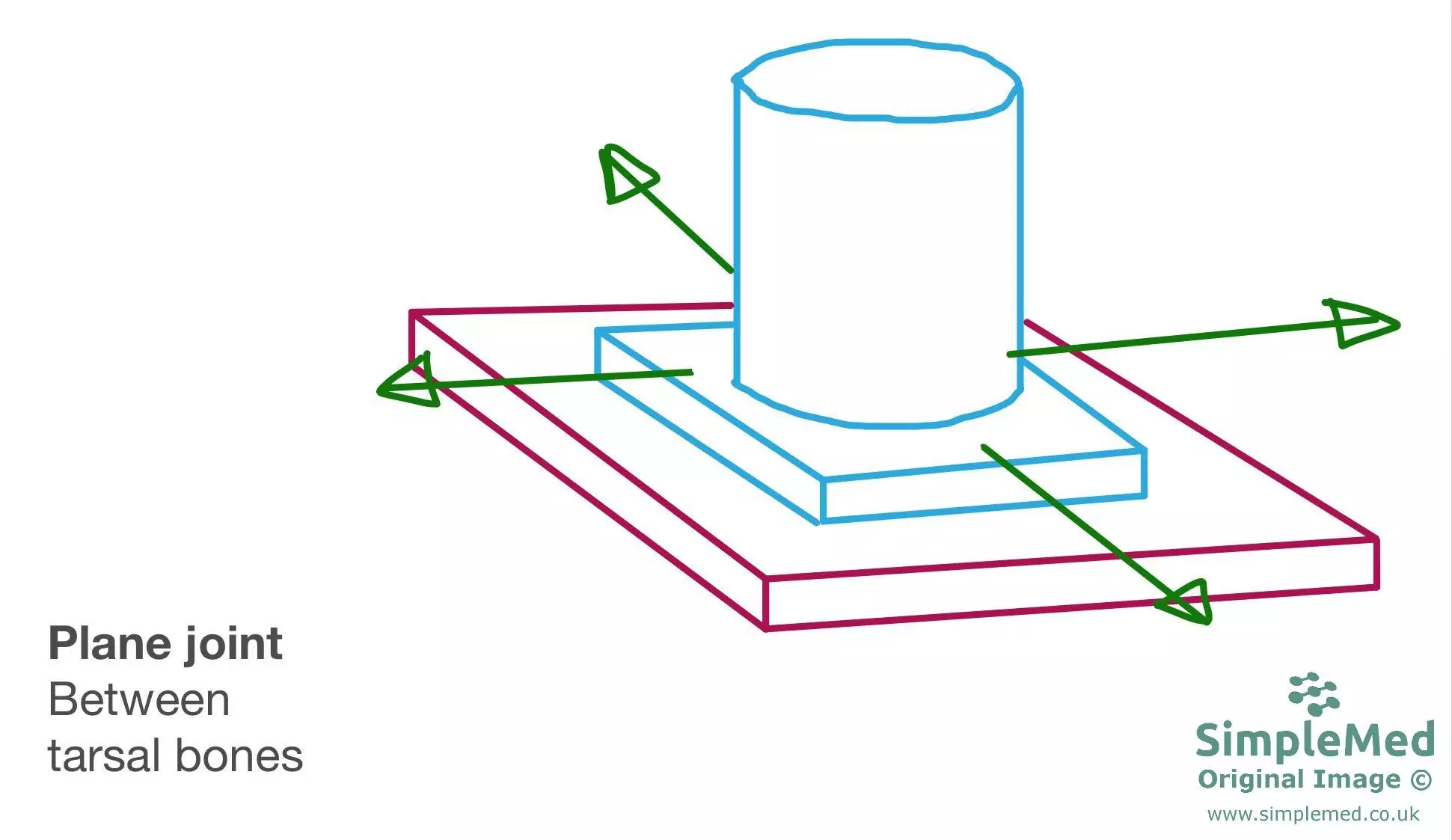
Diagram of a plane joint.
SimpleMed original by Maddie Swannack
Saddle joints are probably the hardest joint type to describe. The articular surfaces are shaped like pringles and allow movement in two arcs that are perpendicular to each other. An example of this joint in the body is between the trapezium (one of the carpel bones) and the 1st metacarpal bone.
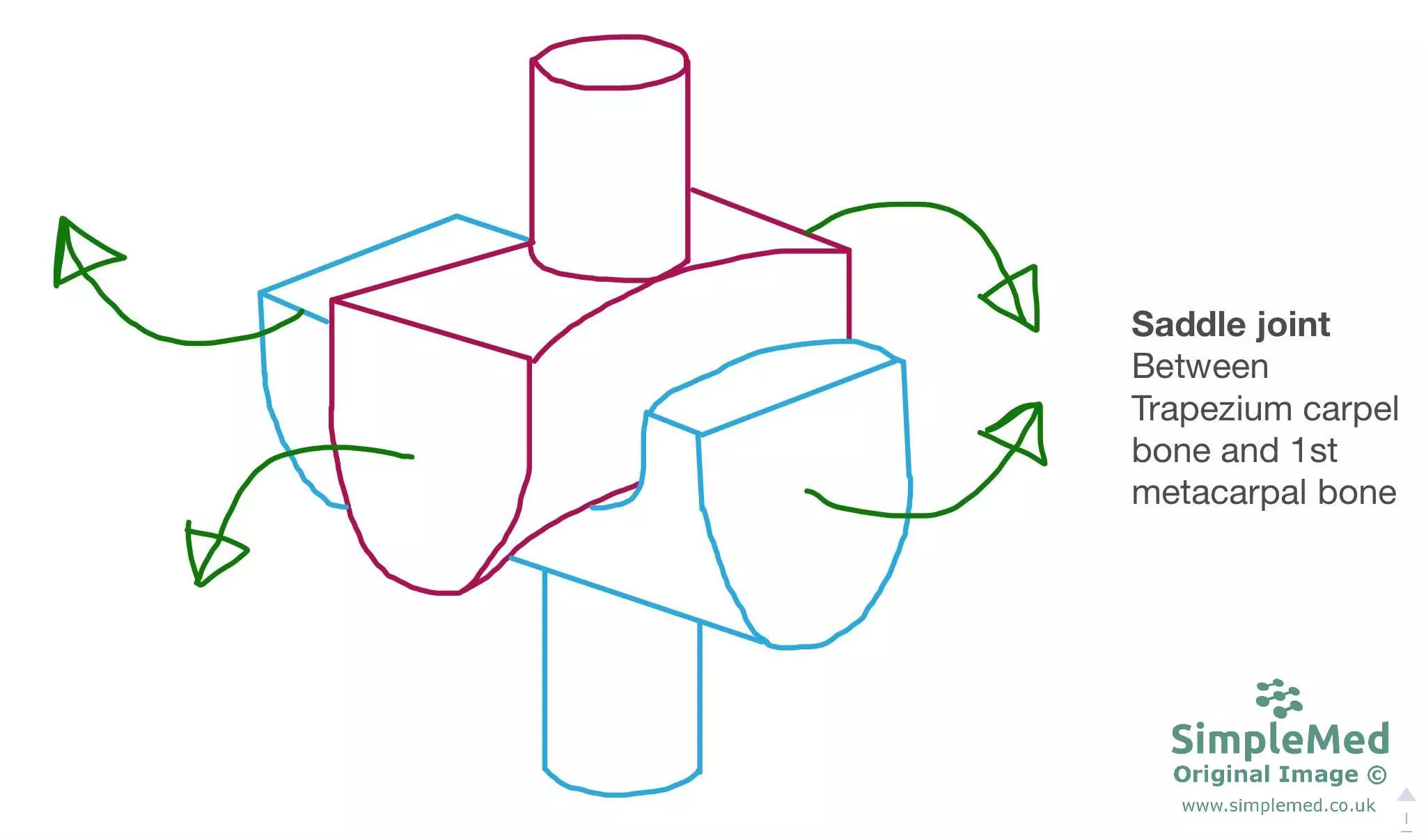
Diagram of a saddle joint.
SimpleMed original by Maddie Swannack
For information about the pathology of each type of joint, check out the Clinical Conditions section of the Musculoskeletal unit.
Edited by: Dr. Ben Appleby
- 17511

